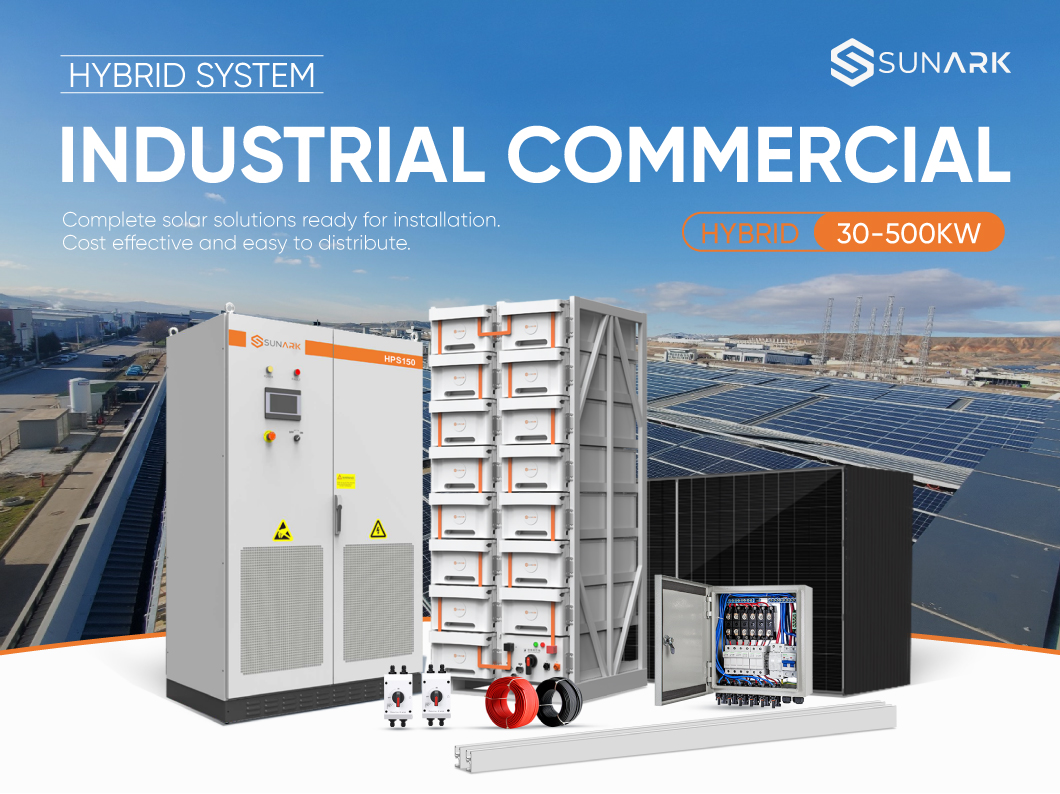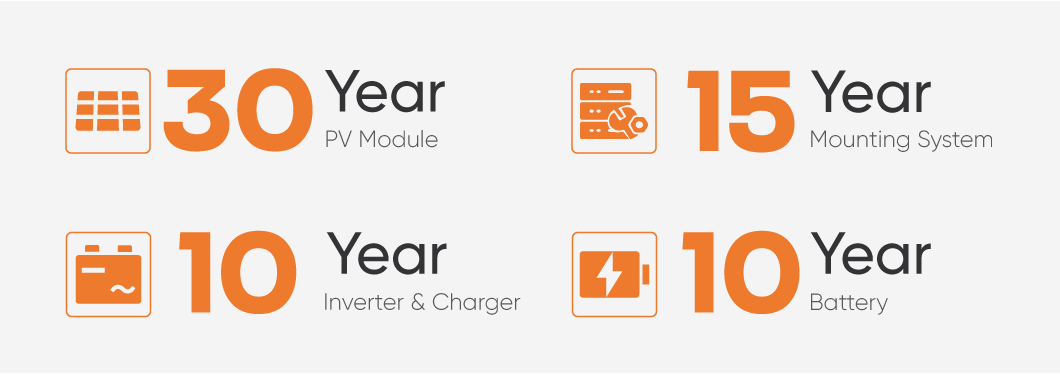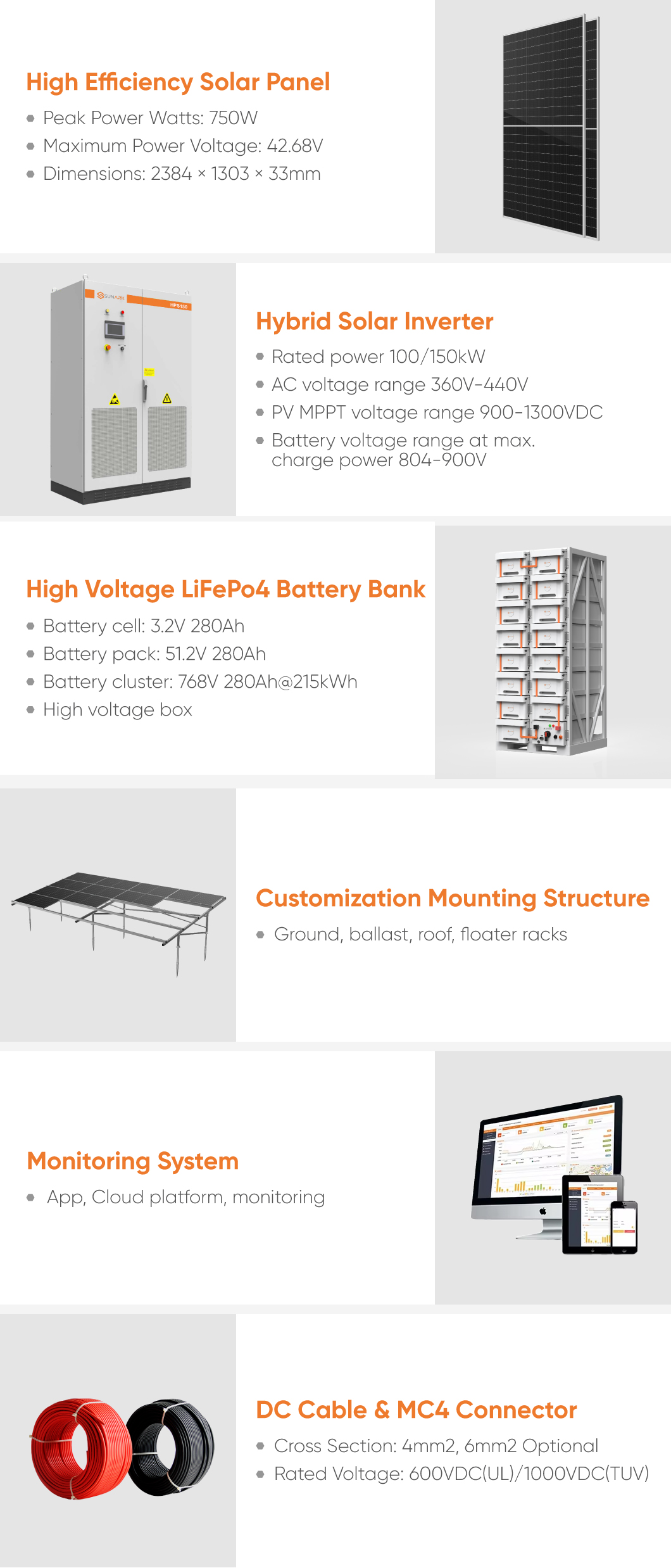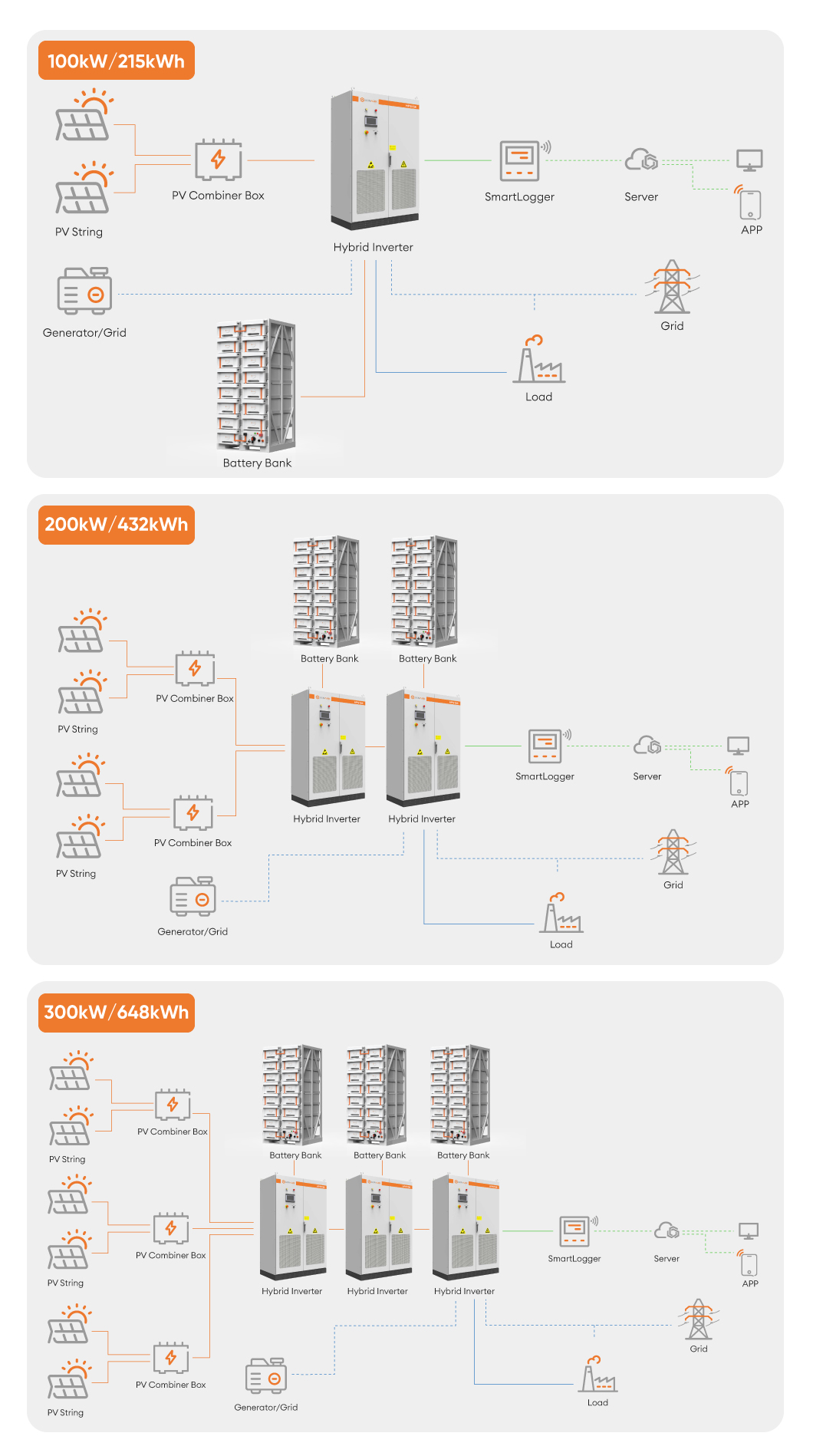A large commercial hybrid system features high power (100kW) & substantial energy storage (215kWh), integrated with a multi-MPPT hybrid inverter, wide PV/battery voltage compatibility (600–900Vdc), <10ms seamless power transfer, dry-contact remote control, and modular scalability.
Brand:
SunArkModel:
SE30-5000KW-HYPV Panel:
550-750WInverter Output Power:
30-500KWAccessories:
Cable, Connector and PV toolsPV Mounting Structure:
CustomizedApplication:
Roof and GroundOEM:
Supported
Contact us for your custom one-stop solar solution
| Solar Power | Battery Capacity | Inverter Power | AC Voltage Range | |
| 100kW/215kWh | 70kW | 215kWh | 100kW | 380Vac |
| 100kW/215kWh | 150kW | 430kWh | 200kW | 380Vac |
| 300kW/645kWh | 200kW | 645kWh | 300kW | 380Vac |
Quality Guarantee




FAQs:
Q1: Do you support OEM/ODM?
A:Definitely, OEM&ODM service is supported with a certain quantity,including customize logo,package and label;
Q2: What's the production time?
A: The production time is normally 15 working days. but we will always prepare some stocks for popular models.
Q3: Can you provide DDP service?
A:Yes, if you are a personal customer and don't want to deal with the customs, we can provide DDP service to your address.
Q4: What about the warranty and how to claim?
A: Warranty period are 10 years since you receive the product, our professional after-sales team will deal with all warranty issues.